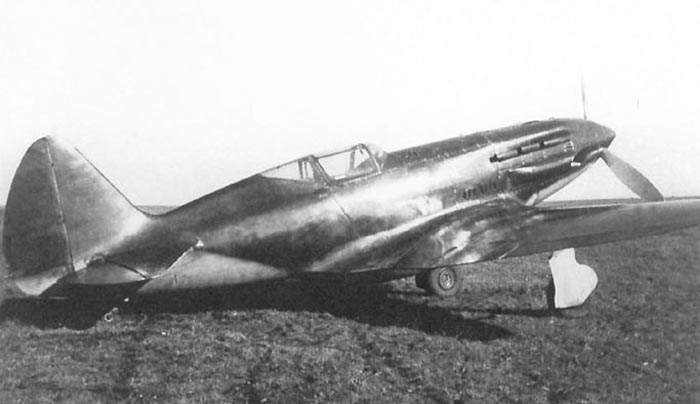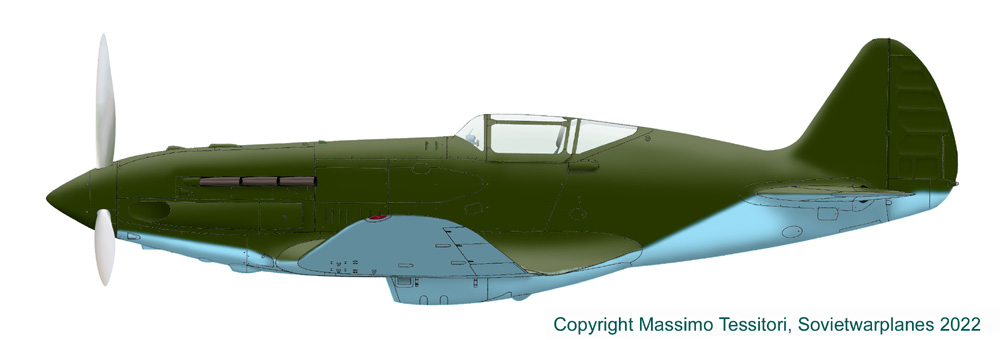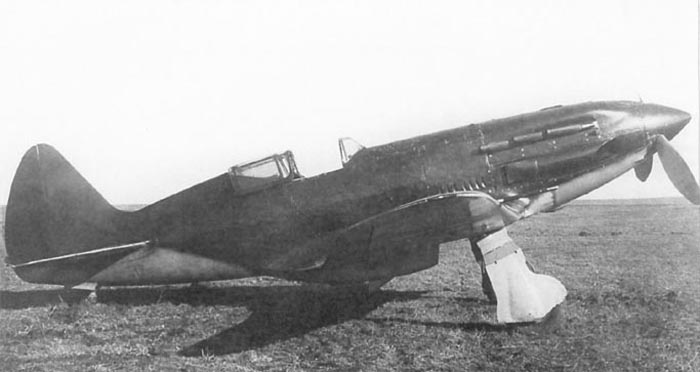File updated on May 29, 2023
| |
|
The SKF resolution of October 2, 1940, required the increase of the range
of new fighters to 1,000 km, at the 90% of maximum speed, measured with fuel
contained in internal tanks only. So Zavod 1 was ordered to develop a new version
of the I-200 that met this request.

|
The prototype of the new version was the I-200 no.04.
The aircraft differed from prevous I-200 prototypes and production MiG-1 for:
The aircraft differs from early type MiG-3 for:
Below, profile of I-200 n.04. The plane had a military style green/light blue livery, but not markings.
|
 |
|
Disclaimer
This work collects also a lot of photos and drawings from many
sources, not always identified and mentioned.
If someone has some rights on the images here reproduced, please email to me
and I shall provide to remove or to credit them.
While the historical photos are of public domain (except where otherwise stated),
my color profiles and coloured photos are copyrighted.
If someone is interested in any use of them, please email
me; higher resolution version is available for printing purposes.
If someone has questions, critiques or corrections, or some further images to
show, please email to me.
Massimo Tessitori
